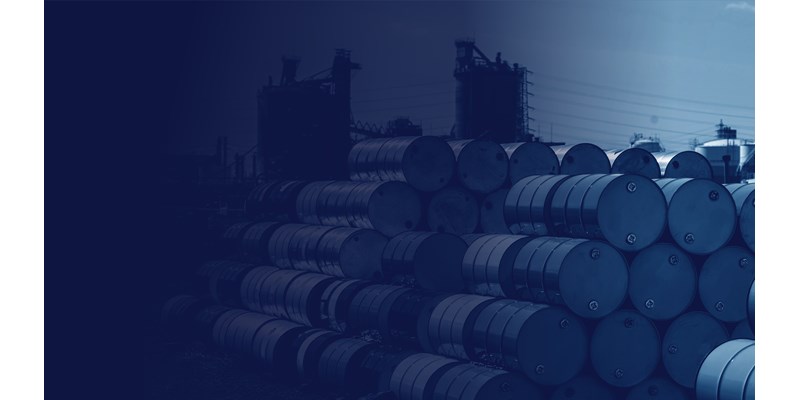1 minute read
Alan Gelder
VP Refining, Chemicals & Oil Markets

Alan Gelder
VP Refining, Chemicals & Oil Markets
Alan is responsible for formulating our research outlook and cross-sector perspectives on the global downstream sector.
Latest articles by Alan
-
Opinion
Assessing the refineries at risk of closure
-
Featured
Oils & chemicals 2024 outlook
-
The Edge
Big Oil’s opportunity for M&A in the petrochemicals downturn
-
Opinion
Survival of the fittest refineries
-
Opinion
Will international shipping be net zero by 2050?
-
Opinion
Are APAC’s retail markets full of Eastern promise for oil majors?
Ann-Louise Hittle
Vice President, Oil Markets

Ann-Louise Hittle
Vice President, Oil Markets
Ann-Louise directs our Macro Oils Service and is a frequent contributor to numerous industry publications.
Latest articles by Ann-Louise
-
The Edge
Why Brent isn’t reacting to escalating geopolitical risk
-
The Edge
What higher oil prices in 2024 could mean for the economy and politics
-
The Edge
Can China’s recovery turn the oil market around?
-
Featured
Global oil markets: another tumultuous year lies ahead
-
Featured
What lies ahead for the oil markets in 2022? | 2022 Outlook
-
Opinion
COP26 oil demand: in the cross hairs of emissions reduction
The oil markets have been on a bumpy ride for the last couple of years. Covid-19 and the oil price crash sent unprecedented shockwaves through 2020. Last year saw a volatile and uneven recovery, with the oil and refining markets each responding differently.
So, what challenges and opportunities will this year bring – and how might the markets respond?
This article is an introduction to Oil markets: 5 things to look for in 2022. Fill in the form for your complimentary copy.
Covid-19 poses an ongoing downside risk to oil demand
Global liquids demand in 2022 will be shaped by two immediate factors: the state of the Covid-19 pandemic and the pace of economic growth.
While vaccination pace accelerated throughout 2021, the emergence of the omicron variant challenged the global approach to containment and the efficacy of China’s vaccines. The shape and scope of viral outbreaks and government response places downside risk on the overall economic recovery and 2022 demand.
Additionally, the pace of inflation accelerated in Q4 2021 and could hinder overall consumption in 2022. This brings downside risk to both economic growth and personal mobility as household incomes become more constrained.
The electrification of transport will set the trajectory of fuel demand
Covid-19 isn’t the only disruptive factor for oil demand. Vehicle electrification policy and pace of adoption during 2022 will have ramifications on global transport fuel demand in the next decade and beyond.
In Europe, for example, 2022 could be the peak of post pandemic transport fuel demand. The ‘Fit for 55’ package proposes amendments to the Energy Taxation Directive. If approved, it will remove tax exemptions on aviation and marine bunker fuels sold within, and for use withinthe EEA from 2023 onwards. This proposal is one to watch in 2022.
In China, EV adoption has increased steadily. In H2 2021, sales approached 20% market share, close to China’s 2025 target. Strong subsidy support has been a key driver – but that subsidy will be eliminated by the end of 2022, after a two-year extension put in place as a response to the pandemic.
Oil supply lining up for strong growth in 2022
What does the oil supply picture look like in 2022? Where are the main sources of growth? How many project sanctions do we anticipate? What are the key geopolitical risk factors – and what impact could they have? To read our view, fill in the form to read this report in full.
The ‘new normal’ continues to take shape for refiners
Last year was characterised by strong light ends, weak middle distillates and the slower than planned commissioning of several major refining projects, particularly those in the Middle East. Covid-19 certainly complicated project completions and commissioning activities, but weak refining margins and narrow East-West middle distillate arbitrage economics reduced the commercial incentive to bring these large projects onstream.
We’re closely monitoring the activities at Jazan in Saudi Arabia, Al-Zour in Kuwait along with Jieyang and Shenghong in China and Vizag in India as these will make a material difference to East of Suez supply/demand balances. However, the largest and most significant capacity addition is the 650,000 b/d Dangote refinery in Nigeria, currently scheduled for commissioning mid-year 2022.
Despite these investments, global demand growth is to outpace these capacity additions by 1.6 million b/d, lifting refinery utilisation and improving refining margins.
How will 2022 refining margins compare to pre-pandemic levels? Read the full report for our comparison.
Could plans to divest refineries lose steam in 2022?
Despite the need for further portfolio rationalisation by the oil majors, plans to divest refineries might lose steam in 2022.
For global integrated companies such as Shell, or more regional downstream players like Petrobras, it might be challenging to find enough interest from buyers and investors as divestments of the most attractive assets in their portfolio have already been agreed in the past year. We could see companies delay refinery sales and focus on a continued commitment to cost reduction and performance improvement, while developing more detailed energy transition strategies. Alternatively, more announcements of refinery conversions to terminals and bio-sites are something to watch out for.
Will the final investment decisions on new refining projects also be delayed? How much pressure could carbon costs add? Read our views on this, and more, in the full report.


